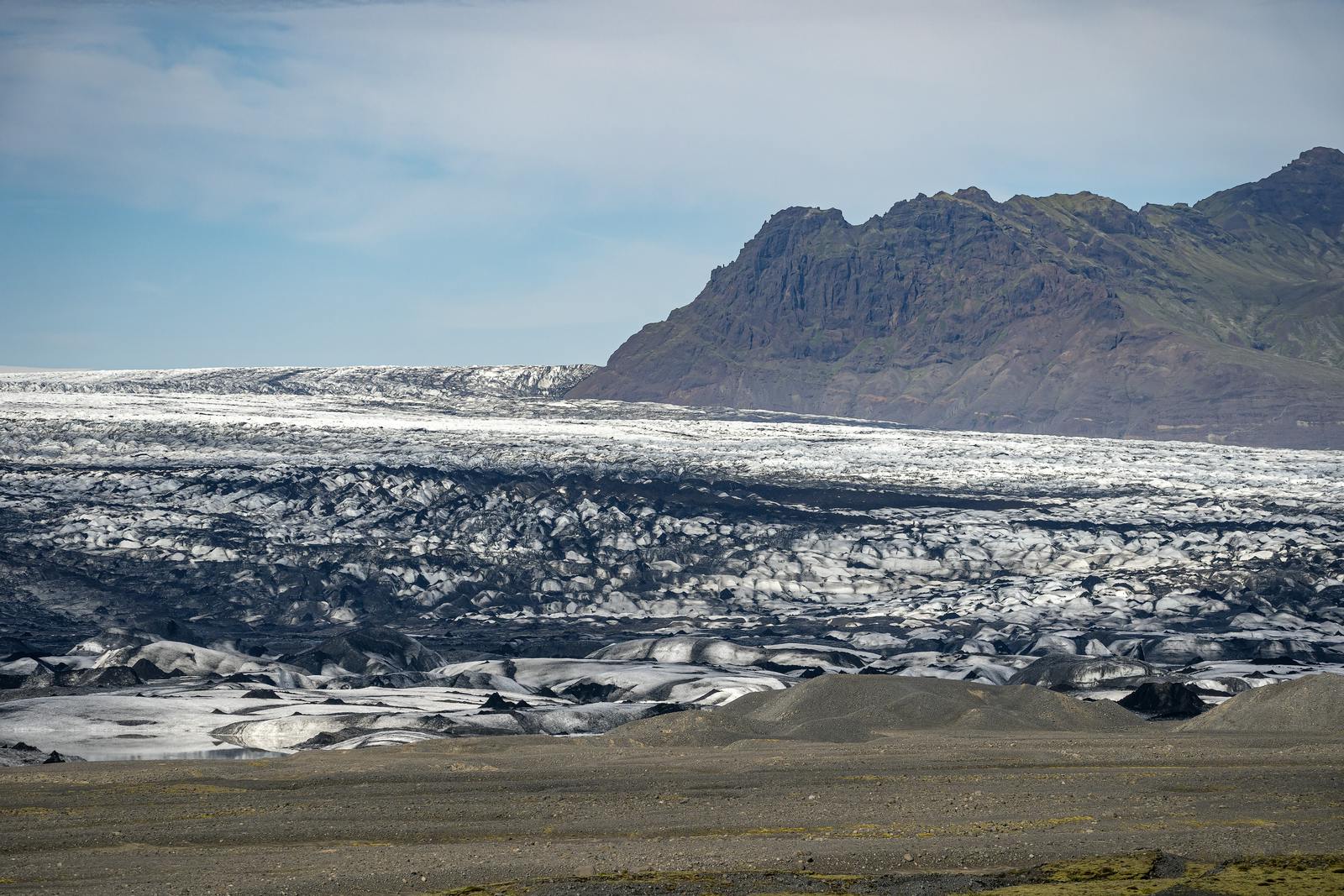
Your Guide to Skeiðarárjökull Glacier in Iceland
Nestled within the landscapes of Iceland, Skeiðarárjökull stands as a testament to the forces of nature. As one of the southern arms of Vatnajökull Glacier, Skeiðarárjökull extends its tendrils, creating a mesmerising panorama that captivates both scientists and nature enthusiasts alike. In this exploration, we delve into the depths of Skeiðarárjökull, unravelling its geological significance, ecological impact, and the dynamic interplay between ice and fire in this unique Icelandic region.
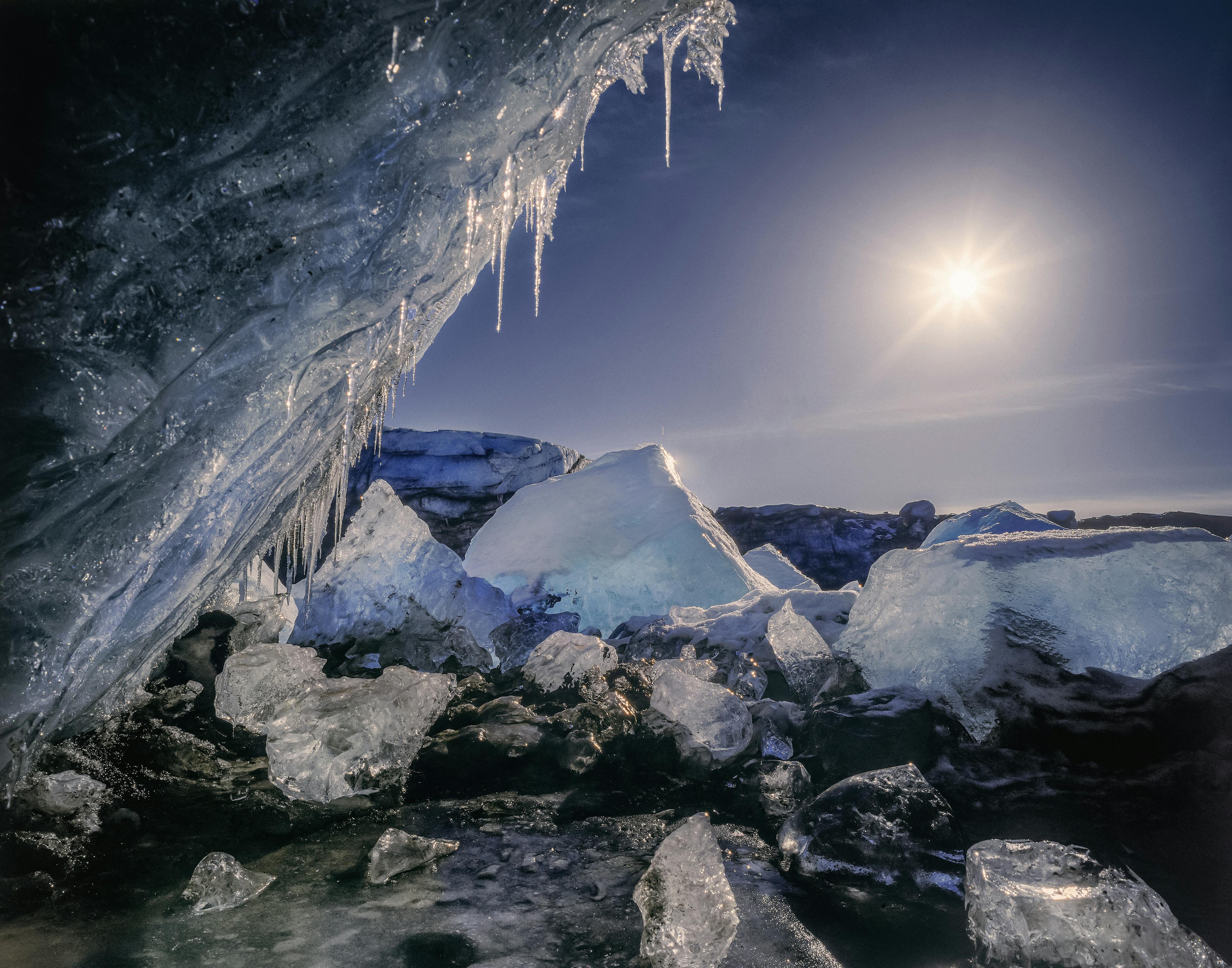
Geological Origins
Skeiðarárjökull is intricately woven into the fabric of Vatnajökull, the largest glacier in Europe by volume. The origins of this glacier can be traced to the vast ice cap that blankets a significant portion of southeastern Iceland. As part of the dynamic glacial system, Skeiðarárjökull emerges as one of the outlet glaciers, a conduit through which the ice from the central glacier flows outward.
The glacier's source lies high in the Icelandic mountains, where snow accumulates over time, gradually transforming into glacial ice. This perpetual process sets the stage for the birth of Skeiðarárjökull. This glacier spans a considerable distance, measuring approximately 75 kilometres (about 47 miles). Its journey from the icy highlands up to 1650 m to the lower elevations of 100 m unveils a geological narrative shaped by the relentless forces of time.
Hydrological Significance
Skeiðarárjökull, like many glaciers, plays a crucial role in the region's hydrological cycle. As the glacier moves and melts, it contributes to the formation of rivers, the most notable being the Skeiðará River and the rivers Gýgjukvísl and Súla. The glacial meltwater flows through intricate networks, carving pathways in the rugged Icelandic terrain. This hydrological system sustains diverse ecosystems, fostering life along its course.
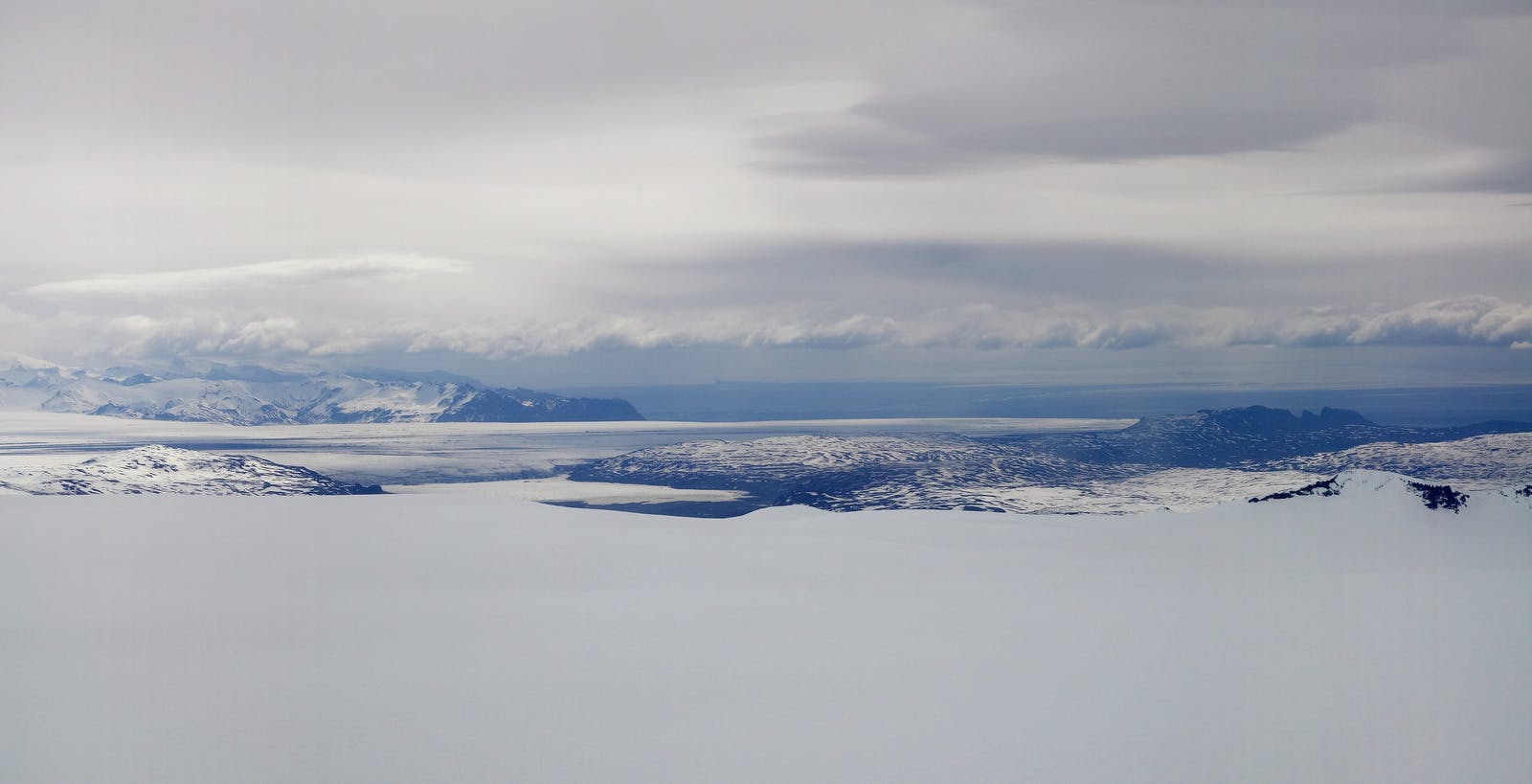
Skeiðará River
Skeiðará is a relatively concise glacier river, spanning approximately 30 kilometres (about 19 miles), with its origin at the southern arm of Vatnajökull, known as Skeiðarárjökull, situated in the southern region of Iceland. Despite its short length, this river carries a notorious reputation, primarily due to frequent glacial flows that pose a serious threat to life.
Glaciers Importance
Perlan Museum in Reykjavík has an exhibition dedicated to glaciers and ice caves where you can dive into their importance. In addition to their beauty and magic, Iceland's glaciers are also vital for the environment. Climate change has an impact on glaciers' existence, and their future looks bleak.
Challenges and Glacial Outburst Floods
Despite its relatively short length, Skeiðarárjökull has earned a reputation for the challenges it presents, particularly in the form of terrific glacial outburst floods known as jökulhlaup. The term "glacial outburst flood" refers to the sudden release of large volumes of water from the glacier, often triggered by volcanic activity beneath the ice.
These floods, though infrequent, are particularly hazardous due to their potential for catastrophic consequences. The glacial meltwater, carrying sediments and debris along with icebergs, surges downstream, posing threats to infrastructure, communities, and the surrounding environment. One such notable incident occurred in 1996 when a glacier run wreaked havoc on the region.
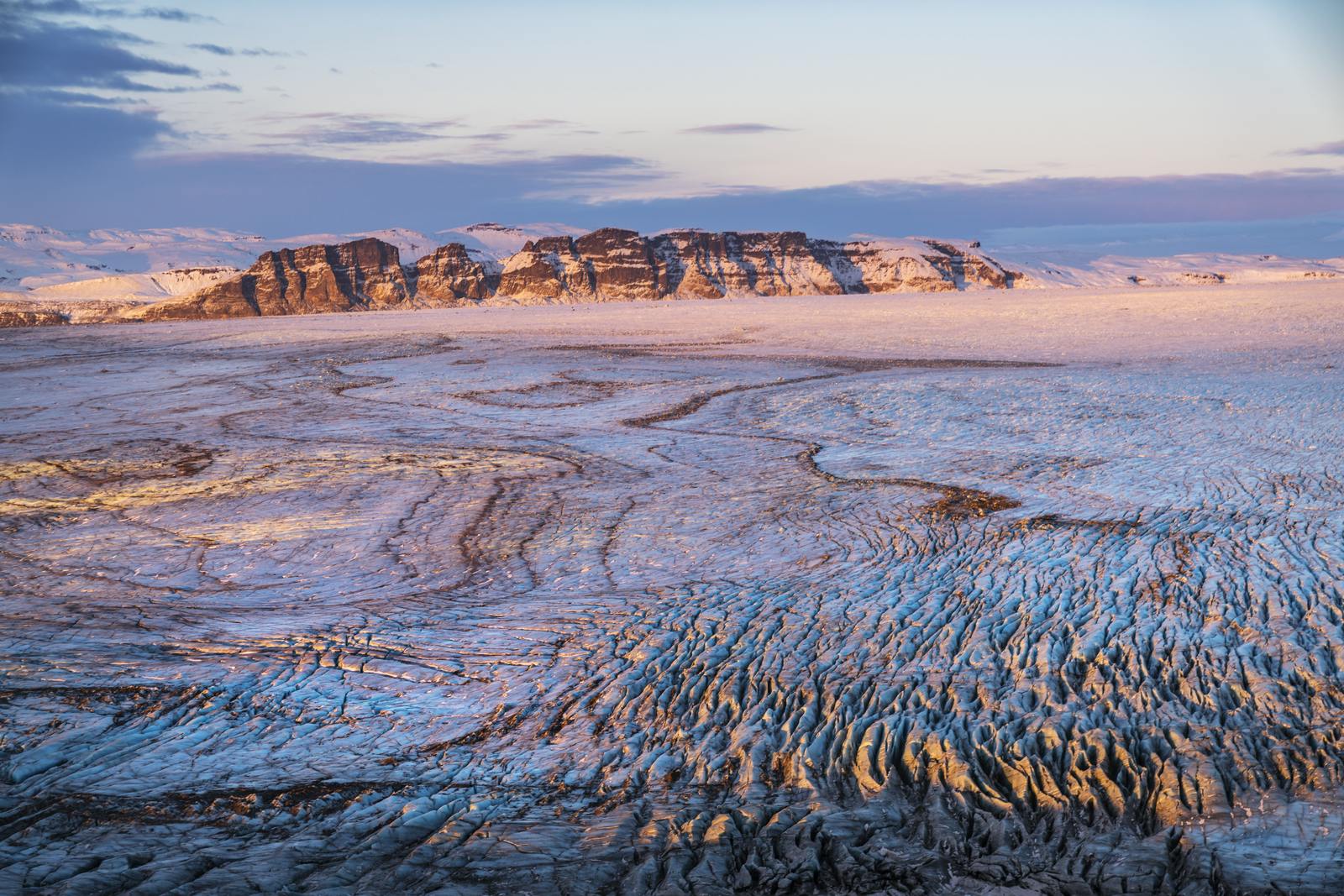
The 1996 Glacial Outburst Flood
In 1996, Skeiðarárjökull unleashed a powerful glacial flood that left a lasting impact on the landscape. This happened along with a large subglacial eruption, the so-called Gjálp eruption. As the glacial meltwater surged downstream from the glacier, it carried massive icebergs, some the size of houses, causing destruction in its path. Notably, the flood damaged parts of Route 1, commonly known as the Ring Road, a vital transportation artery in Iceland. At the height of the flood, a staggering 45,000 m3/s of water descended. Fortunately, no casualties occurred, as scientists had diligently monitored the Grímsvötn volcano on Vatnajökull, attributing the glacial flood to its eruption.
The 880-metre-long bridge that spanned the Skeiðará River faced the brunt of the flood, sustaining damage from the colossal ice projectiles. This incident highlighted the vulnerability of human infrastructure in the face of natural forces, underscoring the need for careful monitoring and understanding of the region's dynamic geological processes.
Scientific Monitoring and Preparedness
In the aftermath of the 1996 flood, scientists intensified their monitoring efforts in the Vatnajökull region, particularly focusing on the Grímsvötn volcano. It was the eruption of this volcano that triggered the glacier run, as the heat and energy released melted the glacial ice, initiating the catastrophic flow of water downstream.
Careful observation and analysis of volcanic activity, ice conditions, and glacial behaviour became imperative for predicting and mitigating the impact of potential glacier runs. Advances in technology, including satellite monitoring and seismic instrumentation, have provided scientists with valuable tools to study the complex interactions between volcanic activity and glacial dynamics.
Skeiðarársandur
In the aftermath of its tumultuous journey from the subglacial volcano, Skeiðará gives rise to the vast Skeiðarársandur. This black expanse, composed of lava sand and ashes, stretches approximately 40 kilometres (25 miles) in length and 5 to 10 kilometres (3 to 6 miles) in width. It serves as a testament to the transformative power of glacial rivers, sculpting the terrain and leaving behind a distinct geological imprint.
The Skeiðarársandur is crisscrossed by numerous small rivulets, adding to the dynamic nature of the landscape. The interplay between the glacial meltwater and volcanic sediments creates a surreal environment where contrasts between black sands and icy waters converge in a harmonious yet fragile balance.
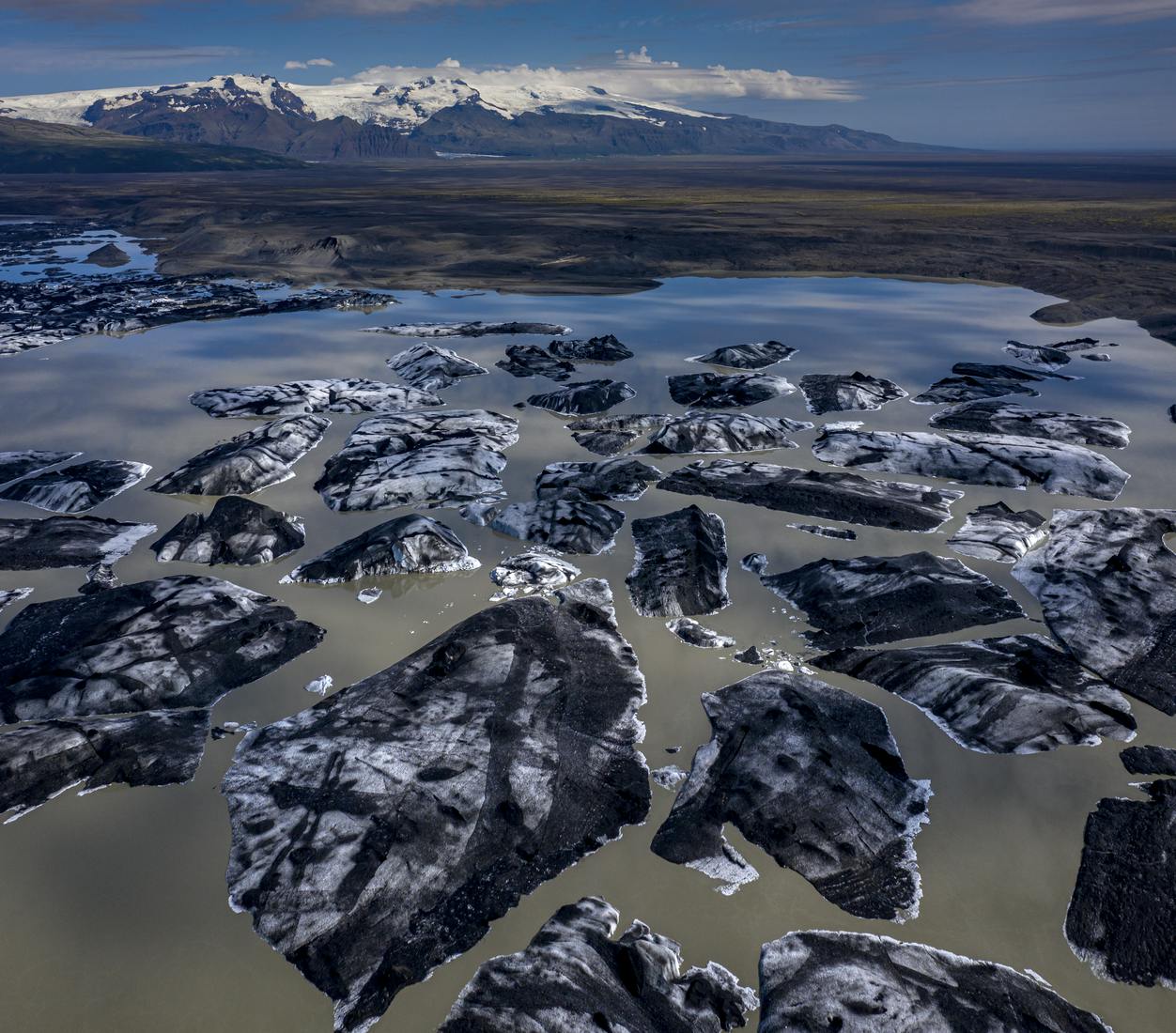
Ecological Impact and Biodiversity
While the harsh conditions of Skeiðarársandur may seem inhospitable at first glance, this unique environment supports a surprising array of flora and fauna. The interstitial spaces between the black sands provide niches for hardy plant species adapted to the challenging conditions of the volcanic plains.
The rivulets that traverse the Skeiðarársandur contribute to the creation of wetland habitats, attracting various bird species. The juxtaposition of stark volcanic landscapes and pockets of biodiversity exemplifies nature's resilience to adapt to extreme environments.
Tourism and Conservation
The ethereal beauty of Skeiðarárjökull, the dramatic glacier runs, and the mesmerising Skeiðarársandur has not gone unnoticed by the global community. The region has become a magnet for tourists seeking to witness the raw power of nature and the sublime landscapes that characterise Iceland.
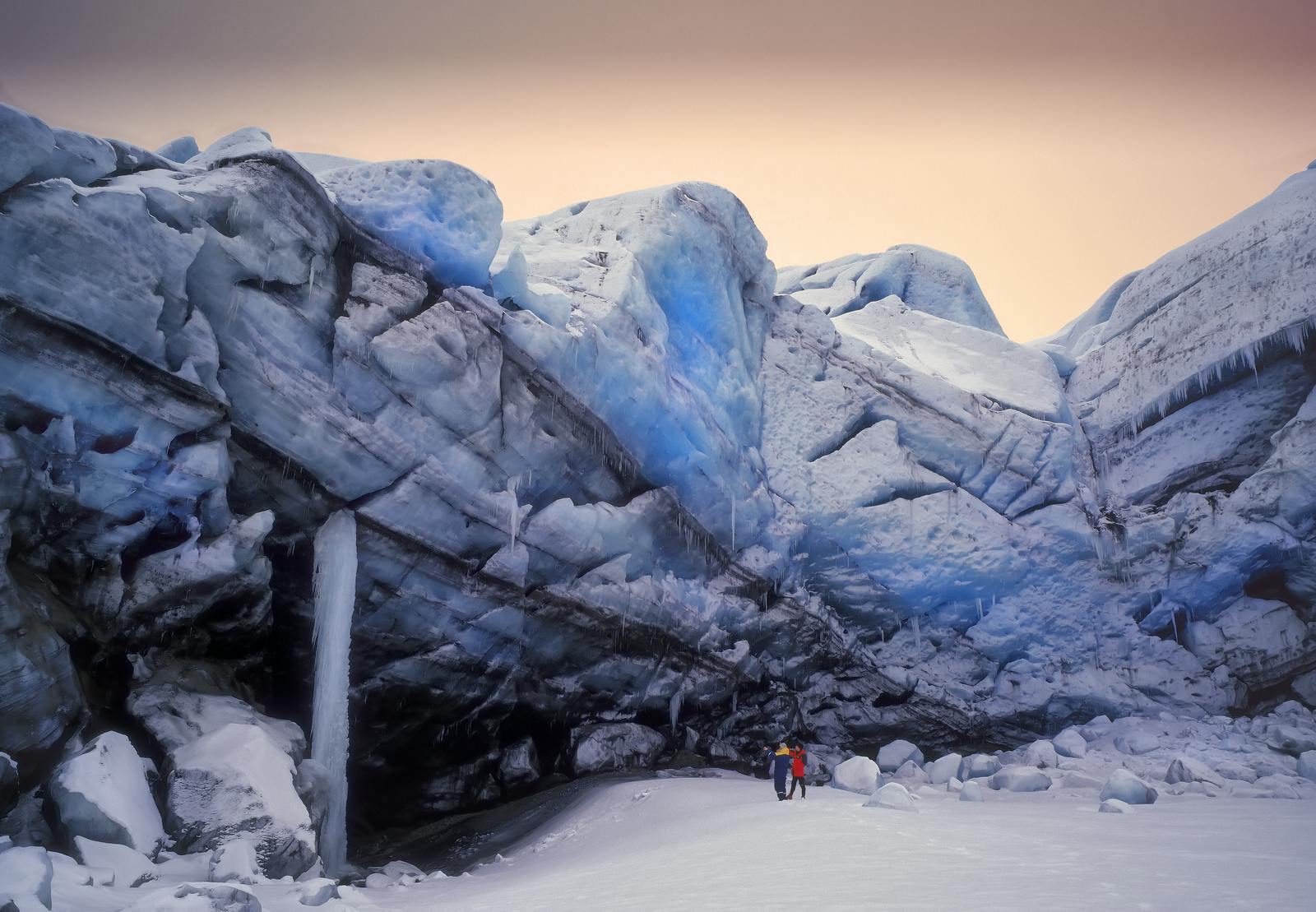
However, the influx of visitors brings with it a responsibility to balance tourism with conservation. Sustainable practices, guided tours, and designated viewing areas help minimise the ecological impact of human presence, preserving the fragile ecosystems that define the Skeiðarárjökull region.







